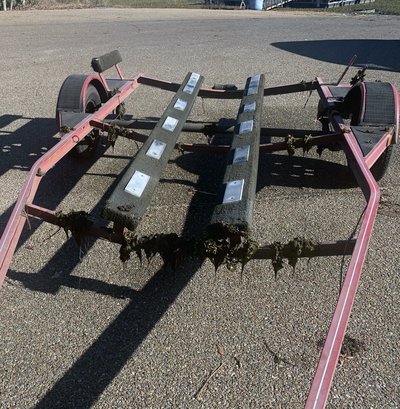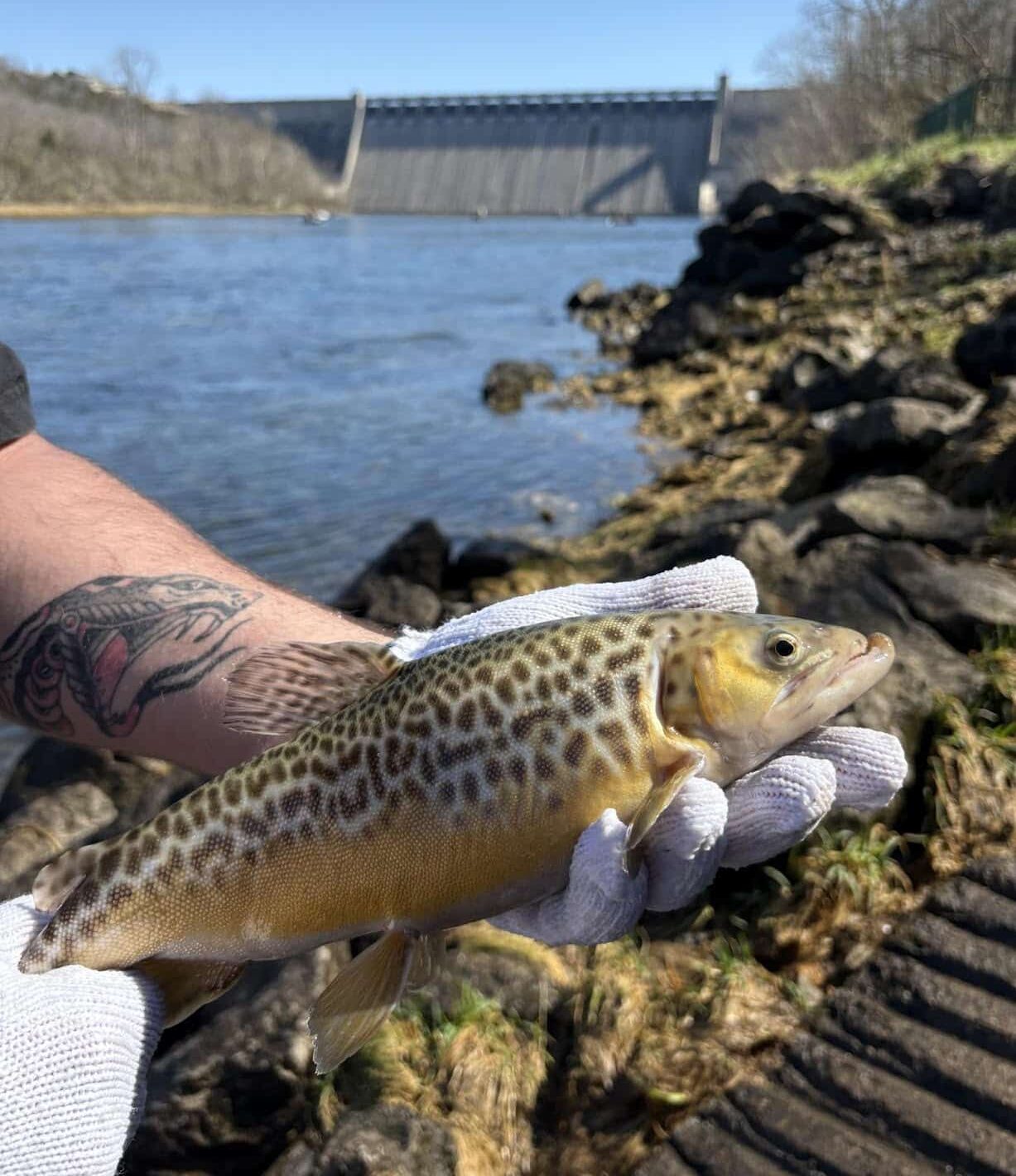Invasive plant threatens angling, hunting at Millwood Lake
ON 01-06-2021

Jan. 6, 2021
Randy Zellers
Assistant Chief of Communications
ASHDOWN — Giant salvinia, a harmful aquatic plant, was discovered in Millwood Lake Monday, Dec. 28, by Arkansas Game and Fish Commission and Army Corps of Engineers staff. This is the fourth known location in southern Arkansas infected by the aquatic invasive species.
According to Eric Brinkman, fisheries supervisor in the AGFC’s Hope office, biologists collected several small clusters of the plant near Jack’s Isle along Little River. No large mats of the plant have been found yet, but it only takes a single piece to become an issue once the weather warms.
“It may look small at first, but this plant grows and reproduces extremely fast,” Brinkman said. “Under ideal conditions in warm weather, it can double in size in less than a week, and nearly every fragment of the plant can create a new mat.”
Giant salvinia, an exotic plant from Brazil, looks similar to duckweed, but is much larger and grows in large clumps. The free-floating plant has leaves between 1 to 2 inches wide. Individual plants group together to form large floating mats that can impede boating as well as crowd out other plants and animals. When left unchecked they can choke out everything else.
“These mats can completely block all access to the water underneath,” Brinkman said. “They can get so dense a person could stand on them, so they are a serious issue.”

Brinkman says AGFC and Corps staff will conduct a larger search for the plant this week to locate any more mats of the vegetation to spray or remove them, and he encourages anyone who sees the plant to contact the AGFC Hope Regional Office at 870-777-5580.
“We have checked between Jacks Isle and White Cliffs, but we need the public’s help if they find it anywhere else in the lake,” Brinkman said. “With the size of Millwood and Little River, we need everyone to be aware of the threat and to let us know with as precise coordinates as they can give so we can stop the spread of this plant if possible. All information will be kept confidential. We also are trying to coordinate with the Corps , Arkansas Plant Board, and the Southwest Arkansas Water District to see what steps we can take to eliminate or control the plant.”
Giant salvinia has continued a slow crawl across southern Arkansas since it was first detected in Smith Park Lake near Fouke in 2017. Its most likely sources of transmission is hitching a ride on recreational equipment such as boats, trailers, duck-hunting decoys and other objects that are moved to different bodies of water during the year.
“Boats and trailers can be major sources for invasive species like giant salvinia to hitch a ride to a new body of water, but we have increasing concerns that most of the cases we’ve seen are the result of duck-hunting equipment,” said Jason Olive, assistant chief of fisheries for the AGFC. “So we’re really trying to get the message to our hunters as well as our anglers to clean, drain and dry their equipment before moving to a new body of water.”
Olive says the initial point of each infestation in Arkansas so far has not been right at boat ramps, but areas further in backwaters where hunters are more likely to deploy decoys, dog platforms and portable blinds.
“If it were only from trailers and boats, the thinking is that you would find it at the boat ramps first because that’s the point where the most contact with trailers and boats occurs,” Olive said. “But that hasn’t been the case at Erling, Columbia and Millwood. And Smith Park Lake doesn’t even have a boat ramp.”
These secluded areas also give the plant a location to grow undetected, becoming a much larger issue than if it were in plain sight and spotted sooner. By the time it is found, it may already be too late to completely eliminate.
“So far, we’ve not had another sighting of (giant) salvinia at Smith Park Lake since we completely drained and then refilled the lake back in 2018, but we’re still looking, and it only takes one small spot where the plant survived to start another infestation,” Brinkman said.
Olive says Louisiana spends more than $9 million per year to spray and otherwise control invasive plants, with a large portion of that being focused on this single plant species.
“Herbicides must come in direct contact with the plant to kill it, which makes spraying less effective,” Olive said. “The plant grows in mats so thick that when you spray, you’re only killing the top layer while many layers survive underneath. You’re literally only scratching the surface with each treatment. And there aren’t many locations where a complete draining to get rid of the plants as was done at Smith Park Lake is possible.”
Brinkman and Olive both agree that the best partners in fighting giant salvinia and other invasive species are the anglers and hunters who enjoy boating and hunting in The Natural State.

“We need everyone to help by doing their part to prevent spreading invasive species by remembering to clean, drain and dry. Clean any boats, trailers and other equipment such as decoys thoroughly after each trip; pull all plugs in boats and let them drain completely before leaving the ramp, and allow all equipment to dry between trips. Pay particular attention to the spaces between the boat and trailer underneath the hull, where fragments can get snagged and carried with wet carpeting offering moisture to survive.”
Visit https://stopaquatichitchhikers.org for more information on giant salvinia and other threats to our wetlands and fisheries.
For more information on giant salvinia sightings in Arkansas, visit www.agfc.com/en/news/tag/giant-salvinia.
Recent News

Catch a tiger by the tail(water)
Mar. 31, 2025
Subscribe to Our Weekly Newsletter E-mails
Don’t miss another issue. Sign up now to receive the AGFC Wildlife Weekly Newsletter in your mailbox every Wednesday afternoon (Waterfowl Reports are published weekly during waterfowl season and periodically outside the season). Fishing Reports arrive on Thursdays. Fill in the following fields and hit submit. Thanks, and welcome!

